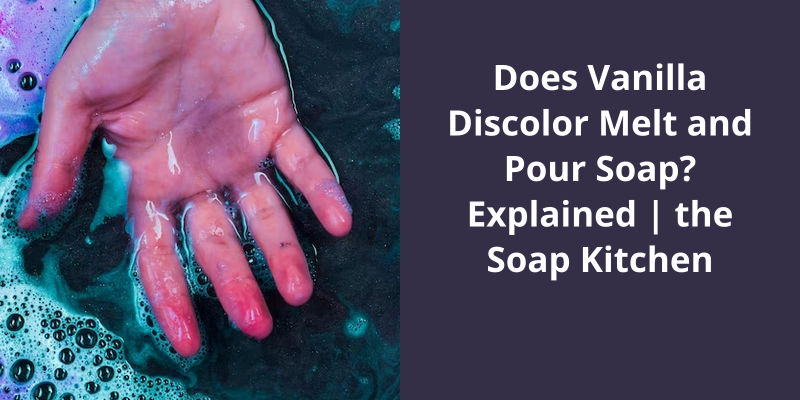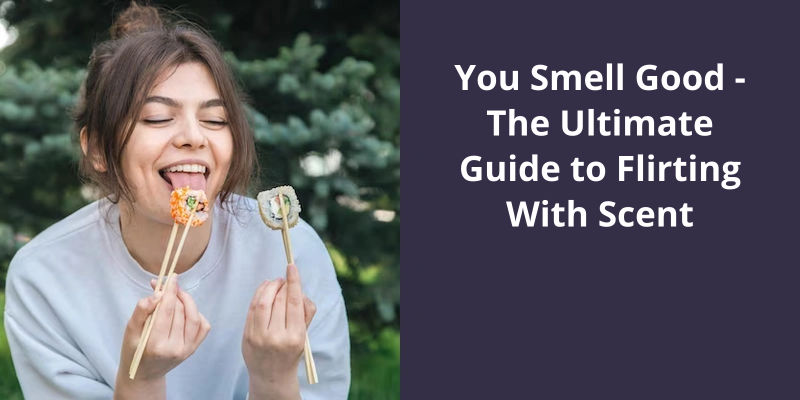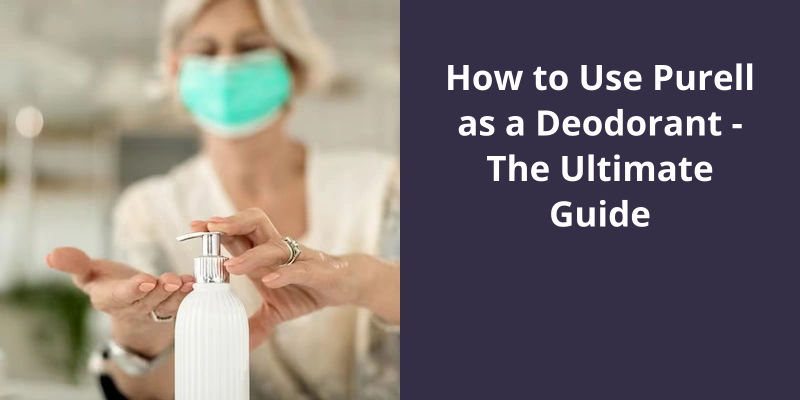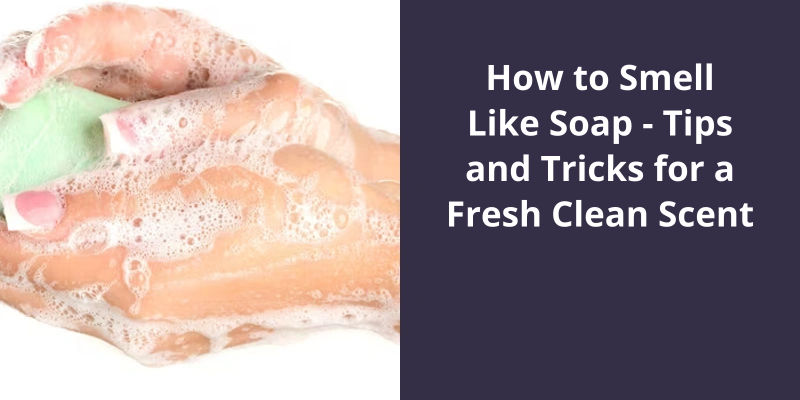Vanilla is a popular fragrance choice in soap making, known for it’s warm and sweet aroma that's both comforting and familiar. However, there's a common question that arises among soap makers: does vanilla discolor melt and pour soap? The answer isn't a straightforward one, as it largely depends on how much vanilla fragrance is added to the soap. In fact, the soap can discolor in a range of shades, from a mild off-white to a deep and rich brown. This discoloration usually takes some time to manifest, with some scents taking longer than others. Additionally, it typically appears first on the soap's exposed surface, where it's most exposed to air. As such, soap makers need to be aware of these factors when creating soaps with vanilla fragrance and plan accordingly to get the desired outcome.

How Do You Keep Soap From Turning Brown?
Handmade soaps are popular for their soothing effect on the skin. But one of the issues that many soap makers face is the problem of soap turning brown. This discoloration is often caused by the presence of natural vanilla in the soap. Vanilla contains the compound vanillin that undergoes oxidation when exposed to air, causing the soap to turn brown. While this doesn’t affect the soaps performance, it does affect it’s appearance and can be a turn-off for some buyers. So, how can you prevent soap from turning brown?
One solution is to use Vanilla Color Stabilizer, a product specifically designed to counter the effects of vanillin oxidation. It’s a liquid that’s added to the soap base along with the fragrance oil. A 1:1 ratio of Vanilla Color Stabilizer and fragrance oil is recommended for best results. The product is suitable for use in melt and pour soap making, where the soap base is melted and poured into a mold.
It’s also important to store the soap in a cool, dry place away from direct sunlight. If youre making soap for a business, be sure to label it with an expiry date so that customers know how long it will last. This will also help to ensure that they use it before it turns brown.
While the discoloration doesn’t affect the performance of the soap, it can be a cosmetic issue for some buyers. By following these tips, you can ensure that your handmade soaps are visually appealing and long-lasting. So go ahead and experiment with different fragrances and ingredients, and enjoy the process of soap making!
Now that we’ve talked about the benefits of using vanilla color stabilizer for melt and pour soap, let’s take a closer look at why vanilla is used in soap in the first place. You may be surprised at the many benefits this sweet ingredient can bring to your DIY soap-making project!
What Does Vanilla Do in Soap?
Vanilla is a popular fragrance and flavoring agent used in countless products, including soap. The rich aroma of vanilla appeals to people of all ages and has a soothing effect on the mind and body. However, there’s a downside to using vanilla in soap-making, and that’s it’s tendency to discolor over time. As the soap cures, it can turn brown or yellow due to a chemical reaction between the vanilla and other ingredients. This can be unappealing to some customers and may affect the overall aesthetic of the soap.
Vanilla Color Stabilizer is easy to use. Simply add it to your melted soap base along with your vanilla fragrance oil and stir well. The recommended usage rate is around 1:1, which means you should use the same amount of stabilizer as you do fragrance oil. For example, if you add 10 drops of vanilla fragrance oil, you should add 10 drops of stabilizer as well.
The Differences Between Natural and Synthetic Vanilla Fragrance Oils in Soapmaking
Natural vanilla fragrance oil is derived from the natural beans of the vanilla plant, while synthetic vanilla fragrance oil is made artificially in a laboratory. In soapmaking, natural vanilla fragrance oil often has a richer, more complex scent, but can also discolor soap. Synthetic vanilla fragrance oil is more stable and less likely to discolor soap, but may have a more artificial scent. Both natural and synthetic vanilla fragrance oils can be used in soapmaking, depending on personal preferences and desired effects.
It’s important to note that the issue of vanillin discoloration isn’t limited to hot process soap, but also affects other types of soap-making processes. In the following sections, we will explore some of the ways to mitigate the effects of vanillin and preserve the color and scent of your soap for as long as possible.
Does Vanillin Discolor Hot Process Soap?
Vanillin is a popular fragrance component that’s often used in many soap-making recipes. This compound, which is derived from the seeds of the vanilla bean, has a pleasant aroma and is known to provide a natural sweetness to products. However, vanillin is also known to be very sensitive to light and heat, which can cause it to break down and discolor over time.
When it comes to the hot process soap making method, there are many factors that can impact the stability and quality of the final product. One of the most common concerns among soap makers is whether or not vanillin will cause discoloration in their soap. The answer to this question isn’t a simple one, as there are many different variables that can affect the outcome.
If you’re using a fragrance that contains a very low concentration of vanillin, then you likely won’t see any discoloration at all.
Another factor that can impact the stability of your soap is the pH level of your recipe. Soap that’s a high pH level is more likely to cause discoloration, as the high pH can cause the fragrance to break down more quickly.
While some soaps may be more prone to discoloration than others, there are many tools and strategies that you can use to maintain the quality and stability of your bars. Whether you choose to use a vanilla stabilizer, carefully balance the pH of your recipe, or implement other protective measures, with the right approach, you can create beautiful, fragrant soap that stands the test of time.
Other Fragrance Components That Can Cause Discoloration in Hot Process Soap
- Citrus essential oils (such as lemon, lime, and grapefruit)
- Cinnamon essential oil
- Vanilla extract or fragrance oil
- Nutmeg essential oil
- Clove essential oil
- Cardamom essential oil
- Peppermint essential oil
- Rosemary essential oil
- Patchouli essential oil
- Ginger essential oil
It’s important to carefully consider the ingredients used in DIY soap making to ensure the best results. While vanilla extract may seem like a tempting option, there are factors to consider before adding it to your melt and pour soap.
Can You Use Vanilla Extract in Melt and Pour Soap?
This is where fragrance oils come in handy. They’re specifically designed for soap making and are safe to use. Fragrance oils come in a variety of scents, including vanilla scents, and are concentrated enough to leave a long-lasting fragrance in your soap. You can even mix different fragrance oils to create unique scents.
When it comes to melt and pour soap, it’s important to make sure that your fragrance oil is compatible with the soap base you’re using. Some fragrance oils may cause the soap to become cloudy or not set properly.
Vanilla extract shouldn’t be used in melt and pour soap due to it’s alcohol content and inability to leave a lasting scent. When using these oils, always make sure they’re compatible with your soap base and do your research to ensure they’re safe for use in soap making. With a little experimentation, you can create beautifully scented soap that’s safe for use on your skin.
Despite it’s versatility in accentuating the sweetness of other scents, vanilla extract, also known as vanillin, has it’s shortcomings when it comes to candle making. One of which is the discoloration it causes, leaving a brownish tint on what would have been a clear or off-white base. As candle makers strive to create aesthetically pleasing products, this caveat has forced them to look for alternatives or ways to mitigate the effects of vanillin on their candles.
Does Vanillin Discolor Candles?
Vanillin is one of the most popular fragrances used in candle making due to it’s versatility and ability to blend well with other scents. It’s sweet and comforting aroma is a staple in the fragrance industry. However, many candle makers have reported that vanillin can cause discoloration in their candles.
This can result in a brownish hue on an otherwise white or off-white base. The discoloration can be unsightly and may affect the overall aesthetic of the candle.
However, these methods aren’t foolproof and may not be effective in all cases.
They may opt to use vanillin in small amounts or blend it with other fragrances to minimize the discoloration.
Candle makers may need to take extra precautions or explore alternative fragrance options to ensure their candles maintain their desired look and aesthetic.
Source: How Does Vanillin Affect Candles?
Conclusion
In conclusion, the discoloration of melt and pour soap with vanilla fragrance is a common occurrence that can vary in intensity and timing depending on the specific scent and percentage used. It’s important to be aware of this potential discoloration when crafting soap and to take it into consideration in the design and presentation of the final product. While this may impact the aesthetic appeal of the soap, it doesn’t diminish the quality or effectiveness of the soap itself.





